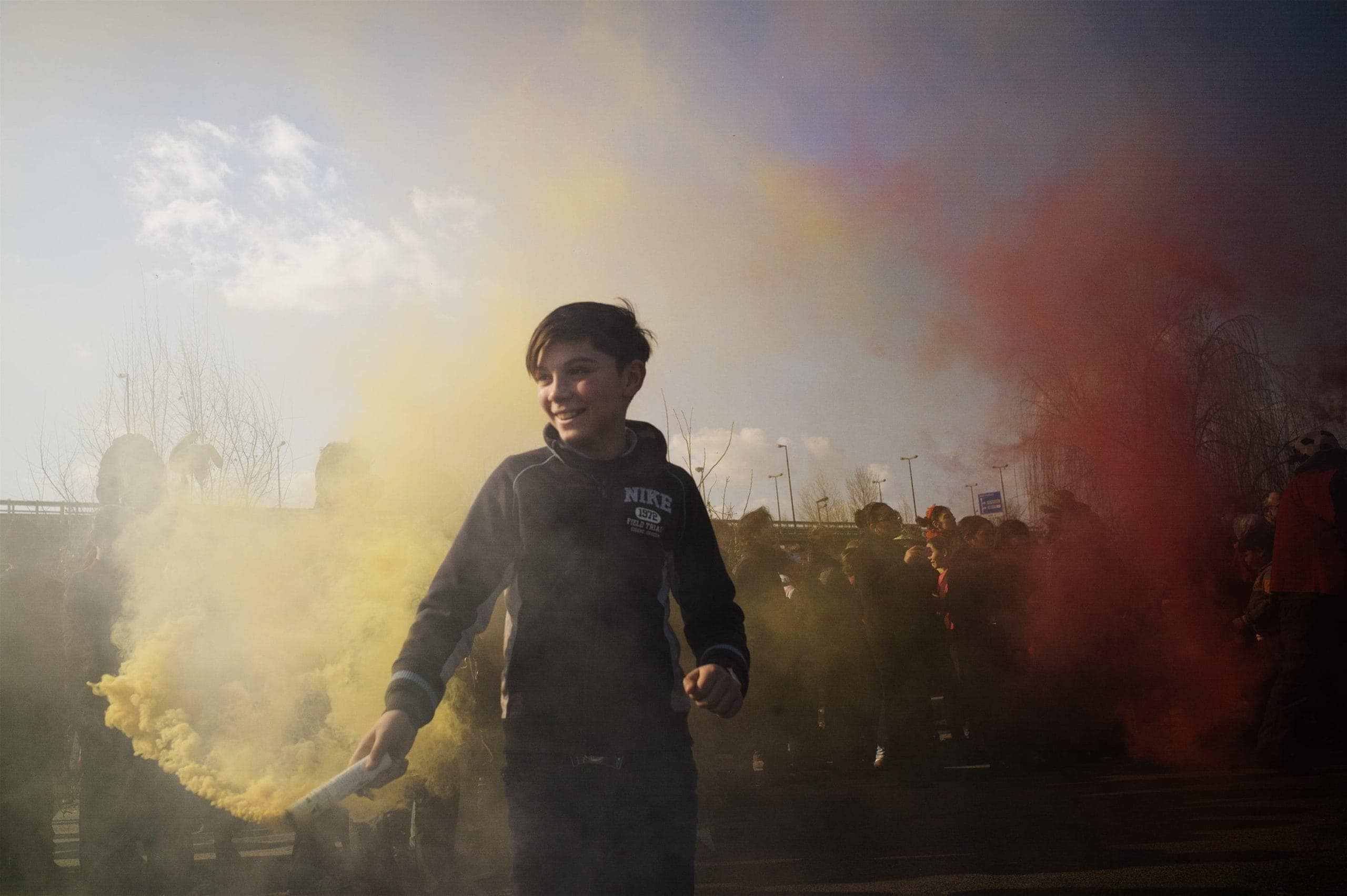

A moment of the celebrations of the Carnival of Scampia in the district of Secondigliano in Naples on February 10, 2013. Thousands of people walked through some of the sybol areas of the camorra mafia organisation in Scampia
Since arriving in Naples ten days ago, I have consumed a lot of the local food, but none of the local media. This, it turns out, has been an even more salutary decision than it might usually be, though it is one borne of nothing more than my ignorance. After 100 or so people tested positive for coronavirus in the North, just over a week ago, the country’s media (apparently even more prone to hysteria than our own) hasn’t done a lot to assuage people’s fears.
It’s an interesting study in mass panic, bearing witness to an ‘emergency’ for which I have front row seats but no idea of what’s being said. Both traditional and social media are apparently awash with terrifying misinformation, even though most of the (relatively few) Italian victims are hundreds of miles away, and there remain no confirmed cases in the city. My local interlocutors roll their eyes at what they describe as a typically overblown Neapolitan reaction. Events are cancelled, then uncancelled, then recancelled again.
ArrayLast week was Carnevale, the gluttonous pre-Lent Christian celebration. In more restrained northern European nations, carnival often involves nothing more than a thin pancake and a wedge of lemon, but in the South, and in Italy especially, it’s still a big deal. In Naples, kids get the day off school and traditionally dress up to take part in parades featuring colourful floats and effigies. On the menu is lasagne, but Neapolitan-style (with extra cheese—smoked provolone and fior di latte—as well as mini polpette meatballs), and chiachierre, deep-fried sweet pastry, served with sanguinaccio, melted chocolate sauce. Yum.
Each neighbourhood has its own procession with the starting gun, both figuratively and sometimes literally, fired on the Sunday by Scampia, the lively suburban quartiere made infamous by the television series Gomorrah. Its procession, known for its defiant air at the best of times, carried added poignancy this year due to the recent commencement in demolition of its iconic Vele di Scampia buildings. Scampians are the Neapolitans of Naples: perennial victims of snobbery, they are known as fiercely proud havers of good times.


On the Sunday of the parade, Italy was not yet in full fevered lockdown. As the crisp February sun bathed the distressed concrete palazzi in light, throwing shadows across its myriad walkways and courtyards, face-painted revellers in top hats and tails twirled and threw confetti in the air. This was not the Scampia I had seen in bloody televisual gang wars. The mood was, um, carnivalesque: an inter-generational getting down; drop-crotched drummers rubbing shoulders with garlanded nonnas.
…face-painted revellers in top hats and tails twirled and threw confetti in the air. This was not the Scampia I had seen in bloody televisual gang wars.
At the end of the procession, as is custom, the effigies were burned—pyro-catharsis dedicated to San Ghetto, the patron saint of the Neapolitan suburbs. This year that meant the immolation of a crane, representing the Vele demolition, as well as a cockroach-covered toilet scrawled with words like ‘racism’, ‘drugs’ and ‘Camorra’. As night descended, the crowds dispersed, drunk and happy.
ArrayThe majority of the other Carnevale celebrations take place two days later, on Martedì Grasso (Fat Tuesday). But, before that, on Monday, the corona carnival came to town. On the city’s metro, there was a masquerade, but it was of the surgical kind. UEFA had deigned that the Napoli-Barcelona Champions League game be played in Naples on Tuesday night, a salivating prospect for anyone who believes football to have quasi-religious significance, which is most Napoli fans, which is most Neapolitans.
On the city’s metro, there was a masquerade, but it was of the surgical kind.
I was getting my news second hand from London, along with trickles of information from the small number of people I know here. The football was definitely going ahead (no need to stop the corporate carnival coming to town) but processions were on, then off, then back on twenty minutes later. Ordinarily, revellers from each quartiere converge in Piazza del Gesù Nuovo (New Jesus Square) in the late afternoon to be merry and swirl around its tall 18th Century-obelisk like a May pole.



Tuesday morning brought more sunshine and clear blue skies, perfect weather for stomping gaily down cobbled streets. My first alert of the day came from Roberto Salomone, the photographer whose photos accompany this piece: the Montesanto procession had been cancelled and the Quartiere Spagnoli one was threatened to be too. In the end, both went ahead, but with severely reduced attendance. The atmosphere in Gesù felt like subdued observance to long tradition. By dusk, the crowds had completely dispersed; but, then again, Napoli were playing Barcelona at nine.
Tuesday morning brought more sunshine and clear blue skies, perfect weather for stomping gaily down cobbled streets.
For big games, and small ones too, cafes and bars put TV screens outside, turned into the piazza or street, so that fans can gather and watch. The crowds are usually big enough that it’s possible to lean against a wall, road beer in hand, and catch the game for free. But, on Tuesday, Piazza Dante was uncharacteristically sparse. Most people I’d spoken to had opted to watch the game at home.
ArrayNapoli’s players, camped in their own half, made it seem as though the ball might be infected—though this is standard practice for less supposedly gifted teams when faced with the Barca juggernaut. But then, they broke free, and a pass from the right found Dries Mertens on the corner of the Catalan’s area. He took a touch, looked up, and curled the ball beyond Ter Stegen. Cue, if not exactly pandemonium, then commotion, followed by a swift return to the nail-biting and frustrated gasps of the preceding minutes.
In the second half, Barcelona did the inevitable and equalised, the game finishing 1-1. Though this gives them a precious away goal heading into the second leg, most agreed that Napoli had done well to contain their attackers, especially Messi, and had played, objectively, a good game. As I trudged home through Piazza Bellini, usually thronging after Carnevale and big matches, I contemplated a bathetic day.

Naples is not a somnolent town—when I first visited, I thought everyone was angry, until I realised that they were shouting because they were happy. The corona panic has kept tourists away and locals off the streets. And, while you might argue the first point could be a good thing, many here rely on tourism to live.
This is a city that has experienced epidemic in living memory (the last major cholera outbreak was in the 1970s) and dotted around the place, including in Piazza del Gesù, there are ‘plague towers’, built to commemorate deliverance from major pestilence. I hope that in two weeks’ time, we’ll see this hysteria as belonging to the minor sort, and Naples can turn its attention once more to the serious business of deliverance from the round of 16.




